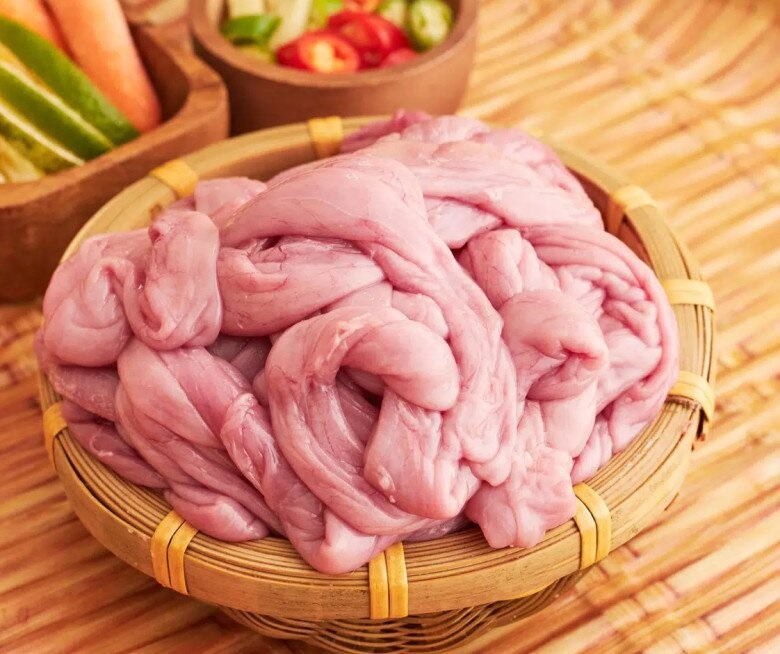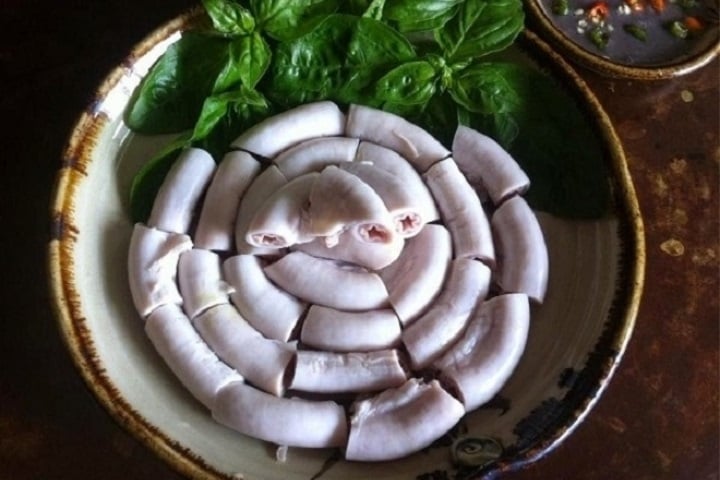Mistakes to Avoid When Boiling Pig’s Intestines
- Not choosing the right intestines: Avoid buying intestines that are thin, with yellow liquid inside as they tend to be tough and bitter. Go for the thicker, crispier front section of the intestines, which are usually rounder and have a milky white liquid inside.
- Boiling intestines in cold water: This is the most serious mistake. Boiling the intestines in gradually heating water will make them tough. The correct way is to boil the water first and then add the intestines.
- Overboiling: Overboiling will also make the intestines tough. After adding them to the boiling water, quickly remove them once they are just cooked to ensure crispiness.
- Letting the intestines cool down on their own: After removing the intestines from the boiling water, immediately plunge them into a bowl of cold water (with added ice cubes, if possible) and lemon juice. This will ensure they remain crispy and white. If you leave them to cool on a plate, they will not only become tough but also turn dark and wither, making them less appealing.
Secrets to Boiling Pig’s Intestines to Make Them White, Crispy, and Not Bitter
Check out the secrets below to prepare a delicious plate of boiled pig’s intestines for your family to enjoy.

Choosing Good Pig Intestines
Selecting the Best Intestines
To get the freshest and best-quality intestines, it’s important to find a reliable and trusted source.
Pig intestines are prone to bitterness and toughness, especially the thicker, yellow-liquid-filled sections. For a better experience, opt for the thinner, front sections, which are usually rounder and have a pinkish-white color with a milky white liquid inside.
Cleaning the Intestines
For regular pig intestines, it’s not necessary to rub them vigorously with salt, ginger, lemon, or alcohol to clean them. Simply turn them inside out, remove the fat layer, and use a mixture of flour and a little salt to scrub them thoroughly before rinsing them under running water. Then, use lemon to rub and remove any remaining impurities, and finally, give them a good rinse.
This method ensures that the intestines are thoroughly cleaned while maintaining their freshness and flavor.
For small intestines, simply rinse them under running water to remove the inner liquid or gently squeeze them out, and then wash again.
The Right Way to Boil Intestines
Prepare a bowl of cold water with a few drops of lemon juice or some sour alum, bring it to a boil, and then let it cool down.
Boil a separate pot of water and then add the intestines. This step is crucial to ensuring the intestines turn out just right. Adding them to already boiling water will cook them just enough to make them crispy.

Add Ginger for a More Aromatic Flavor
Let the intestines boil for 2-3 minutes, or until they turn pink, and then remove them from the heat and soak them in the prepared bowl of lemon-infused cold water. This process ensures the intestines remain crispy and take on a beautiful white color without turning dark.
For small intestines, boil them for a few minutes, turn off the heat, and then plunge them into a bowl of cold water with some sour alum and ice cubes. Once they’re cool, remove them and cut them into bite-sized pieces.
The key to achieving white, crispy intestines is to boil them quickly and remove them from the heat as soon as they’re cooked. Overboiling will make them tough.

































